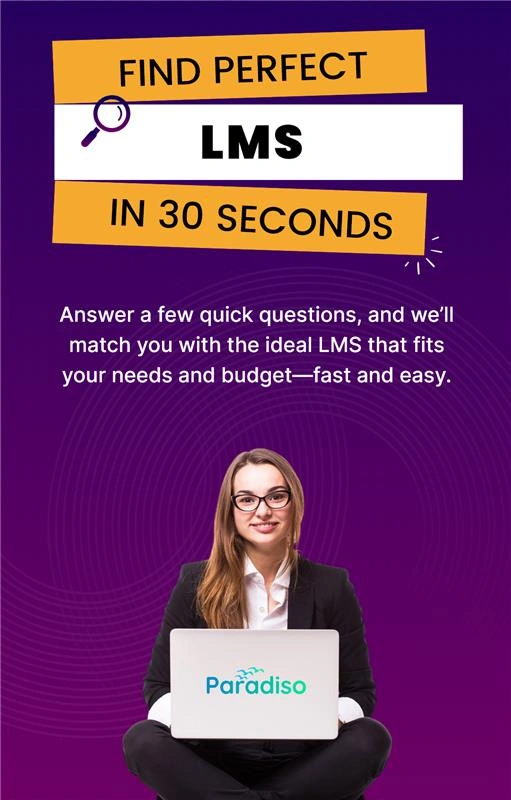People praise open-source LMS platforms because you can change them, make them your own, and they don’t cost much. But they’re not perfect for everyone. They work best for groups that know how to tweak the platform to fit what they need to teach.
When or When Not to Use Open Source LMS?

This might mean adding new features or making it work with other systems. For schools with special needs or those who want total control over their LMS, open-source platforms give them more freedom than paid systems might. Take universities, for example. They often like open-source LMS because they can change it to fit different departments’ needs. However, open-source LMS might not work well for groups without tech know-how. Running and keeping up an open-source LMS requires a competent IT team to handle changes, updates, and safety. For smaller firms or those with few tech resources, the work to keep such a system can be more than its perks. In these cases, not having seller support, which you often get with paid systems, can cause work issues.
Also, the time to set up and adjust an open-source LMS can be a lot. If the group needs to set up fast with little prep, paid LMS options can offer a smoother way. Plus, while open-source LMS might seem cheaper at first, the total cost can go up due to ongoing upkeep and support needs. So, open-source LMS is best for those who can make the most of its perks and use the needed resources to run it well.
How About Open Source vs. Proprietary LMS’s?
We must understand the key differences between open-source and proprietary learning management systems. People often praise open-source LMS platforms because they can be customized. With proprietary systems, the vendor decides what features you get. But with open source, you can tweak the system to fit your needs. This helps industries that need special learning paths or who follow strict rules. Take healthcare, for example. They might pick an open-source LMS to create specific training modules matching their regulatory needs.
On the other hand, proprietary LMS platforms are easy to use and have full support, which makes them a good fit for companies that want a ready-to-go solution. These systems have simple interfaces that make things easier for users, so they don’t need much training or tech tweaks. Proprietary systems often come with customer help, which is great for companies without tech experts—this part of proprietary LMS appeals to businesses that care more about getting things done than making changes. Also, proprietary LMS sellers often include strong security as part of their offer, which can sway organizations that care about keeping data safe and following rules. Knowing that the seller will keep the system up-to-date and working well takes some stress off the company’s IT teams.
Regarding new ideas, open-source systems get a boost from community-driven growth. A worldwide group of developers helps to improve and add new features. This team effort can spark quick progress and create many add-ons and tools that fit different learning setups. But this plus side means you need to watch out for safety and quality since not all community-made add-ons might meet what an organization wants. In contrast, proprietary systems bring new stuff within the limits of what the seller plans, giving new features and updates as part of the deal. While this might cut down on customization, it gives a steady and predictable system that some groups like. Choosing between open-source and proprietary LMS boils down to what the organization cares about most, how tech-savvy they are, and what they need for teaching.
How Do Open Source & Proprietary LMSs Compare on the Cost Front?
Cost plays a key role when deciding between open-source and proprietary LMS. Each option’s cost structure can affect an organization’s budget and long-term investment.
Open Source LMS Cost Considerations
- Initial Cost: Open-source LMS solutions are free to download and use, so you don’t have to pay for expensive licenses. This makes them a good choice for groups that have little money to spend.
- Customization and Development: While you can get the software for free, making it fit your needs can cost money. You might need to hire developers or experts to adjust the LMS, which can add to your total expenses.
- Maintenance and Support: Using an open-source LMS means you need to keep it running and get help when things go wrong. This can get expensive over time. You’ll either need tech-savvy people on your team, or you’ll have to outsource for expertise.
- Hosting: Unlike proprietary LMS solutions that might provide cloud-based hosting, open-source LMS needs organizations to set up their own hosting. This adds to the overall cost and makes things more complex.
Costs to Think About for Proprietary Learning Systems
- Licensing Fees: Buying proprietary LMS solutions can cost a lot upfront. Companies charge based on how many people use it or what features you need.
- Support and Updates: Most proprietary LMS vendors include support and updates when you buy their products. Although the overall price is higher, this gives you peace of mind and means your IT team has less work to do.
- Customization and Integration: Proprietary LMS solutions let you customize things, but this might cost extra. Companies should consider what they need and factor in fees to connect the LMS with other systems they use.
- Total Cost of Ownership (TCO): Proprietary LMS often have a clear TCO, with set prices for licenses, support, and upkeep. This can help organizations that want to budget and know their costs upfront.
Conclusion
When you think about your choices, ask yourself: What type of learning do I want to create, and how can the right LMS help make this happen?
Paradiso offers a mix that brings together the best parts of both worlds. With Paradiso, you can get the strong security and help you’d expect from private systems while still being able to change and adapt things like you can with open-source options. Paradiso’s prices scale up or down and are clear, so it works for new companies, big businesses, and everyone in between. The full set of services they provide means that groups can focus on what counts—creating learning that makes an impact and keeps people interested—without getting stuck on tech problems.












